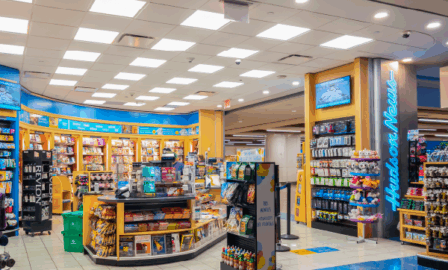Exploring the Implications of Generative AI in Retail
Generative AI, also known as generative adversarial networks (GANs), is a subfield of artificial intelligence (AI) which has the potential to change the retail industry. This technology uses deep learning algorithms to generate brand new data and content based on user prompts. In contrast, other AI like reinforcement learning is more focused on processing and analyzing existing data. Clarkston’s retail team has enjoyed exploring the implications of generative AI in retail and how it will be harnessed to reshape and curate enhanced customer experiences.
Implications of Generative AI
Generative AI has immense potential for the retail industry. Listed below are a few of the most important avenues that may be affected.
Post-Purchase Support: Generative AI is especially useful for improving online chatbots, which can be trained to assist customers with post-purchase issues. Where current chatbots may only have a handful of preloaded conversations, those powered by generative AI are capable of a potentially infinite number. Consequently, more queries can be answered without the need for live support. The same technology can also be used to bolster predictive analytics. By analyzing data on past product issues and returns, AI algorithms can proactively offer solutions to common concerns. This can lead to faster resolution and higher levels of customer satisfaction.
Inventory & Product Choice: Retail inventory choices can be optimized with generative AI by helping retailers more accurately anticipate demand for their products. By analyzing historical data, generative AI can identify trends in consumer behavior and help retailers adjust their inventory accordingly. Generative AI can also analyze real-time sales data to predict this demand on the fly. As a result, retailers can avoid over or understocking and the “bullwhip” effect that can result from uncoordinated supply chains. Additionally, regional product preferences can be better understood based on purchasing behavior data. Thus, inventories can be tailored to meet the specific needs and preferences of each market.
Social Commerce & Content Creation: Generative AI allows retailers to produce personalized content more efficiently and effectively. By analyzing large amounts of data on customer behavior, generative AI can create content for social media and other online campaigns that is more likely to resonate with audiences. Automating the content creation process could save retailers significant labor hours and may prove very effective when paired with AI-savvy content editors.
The Customer Experience
Retailers that implement these new tools and analytics will certainly change the way that customers shop. Currently, customers increasingly expect personalization in retail. From simple product recommendations to fully individualized shopping experiences, retailers’ offerings help drive revenue by guiding shoppers to what they want to purchase.
Following this need for personalization, artificial intelligence is especially useful at this stage because of its ability to rapidly process large amounts of customer data. Generative AI especially can help create regional or individual customization online. For example, websites can tailor marketing and product recommendations based on past behavior to optimize that person’s online experience.
As mentioned above, AI-powered chatbots can manage concerns far above the capabilities of many websites today. From addressing basic concerns like shipping or returns to questions that have never been asked before, upgraded chatbots reduce the need for human customer service.
In addition, generative AI has wide utility for in-person shopping experiences. The use of augmented reality (AR) and virtual reality (VR) technologies that build from AI allows customers to test various products before making a purchase. For example, customers may virtually try on clothes or see how furniture would look in their homes before making a purchase. This helps bolster confidence to make purchases and minimizes the risk of costly returns.
Finally, this technology can also be used to optimize store layouts and product placement. Consumers may not notice these changes as much as VR or AR capabilities, but they certainly still result in a more efficient and effective shopping experience.
The Future of Generative AI in Retail
Generative AI has significant implications for the future of the retail industry. Bolstering post-purchase support, inventory choices, content creation, and customers’ shopping experiences only begins to scratch the surface on its capabilities. Ultimately, retailers should strongly consider evaluating AI-powered platforms to ensure they retain an edge against competitors.
If your organization has questions about how best to take a first step with generative AI technologies, let’s connect. Our retail analytics experts are passionate about solutions that may fit your needs.
Subscribe to Clarkston's Insights
Contributions from Jake Park-Walters



